How to Get Rid of Acne: 7 Home Remedies for Pimples
What is Acne ?



When your skin follicles are clogged with oil and dead skin cells, acne develops as a skin disorder. Acne is a very common condition, and the majority of individuals have had it at some point in their lives, particularly when they were teenagers and their sebaceous glands were producing more oil.How to Get Rid of Acne
Adult acne, on the other hand, has no age restrictions and is common in persons in their 40s and 50s.

When your skin’s pores become blocked with oil and dead skin cells, acne develops.
Each pore is associated with a sebaceous gland, which creates sebum, an oily material. Propionibacterium acnes, often known as P. acnes, can develop more rapidly when excess sebum clogs pores.
P. acnes is attacked by your white blood cells, causing skin irritation and acne. Although some cases of acne are more severe than others, whiteheads, blackheads, and pimples are common signs of the condition.
Acne development may be influenced by a variety of variables, such as:
genetics
diet
stress
hormone changes
infections.
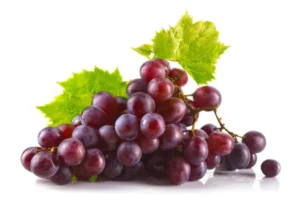
Whether eaten whole as a snack, halved as a salad topping, or frozen as a nutritious dessert, grapes are a cooling snack. However, you probably don’t think of grapes when you think about acne treatments.
However, resveratrol in the skin of red grapes may have bactericidal effect against Cutibacterium acnes, according to a study published in April 2016 in Advances in Dermatology and Allergology. C. acnes, formerly known as Propionibacterium acnes, is a bacteria that causes acne and lives in the sebaceous glands.
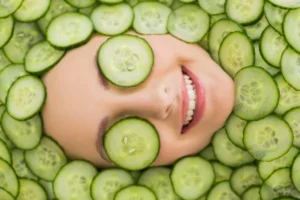
If you’ve ever visited a spa, you’ve probably had cucumber slices applied to your eyes to reduce puffiness, and it’s possible that this wasn’t a fake treatment.
Cucumbers may have a calming impact on the skin, lowering irritability, edoema, and soreness, according to a previous review. They may therefore be able to reduce inflammation that is directly linked to acne.
According to Dr. Zeichner, when acne occurs, “inflammation develops within the oil gland and follicle, leading to red, angry pimples in the skin.” “A cyst may form and fill with oil when acne spreads deep within the skin. A significant inflammatory response frequently takes place if the cyst wall ruptures and the oil is exposed to the deeper skin layers, according to him.
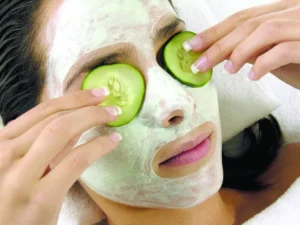
Use this cucumber cure if you don’t have any oats or yoghurt on hand. Your skin, which could feel rough from acne, will feel smoother after using this cooling, soothing mask. According to Cook-Bolden, “mash one entire cucumber, drain the water, add one spoonful of sugar, and combine thoroughly.” Apply to your face, wait 10 minutes, and then wash it off with cold water.
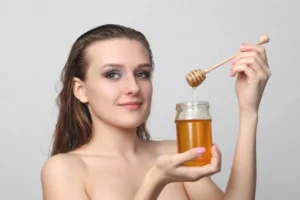
Honey has several therapeutic benefits. The Mayo Clinic states that some people use it as a natural cough syrup and sore throat remedy. (4)
In vitro experiments, which were reported in a paper that appeared in the Central Asian Journal of Global Health in August 2016, indicate that honey’s antibacterial qualities may also aid in the healing of burns and wound infections as well as limit the growth of C. acnes. (5)
Cook-Bolden advises washing your skin with warm water before using this mask. After that, apply the honey to the skin and let it sit there for 30 minutes. Use warm water to rinse the honey.
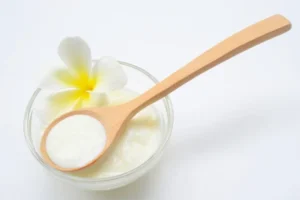
Fermented dairy products like yoghurt may help skin health, according to findings published in April 2015 in the International Journal of Women’s Dermatology, though additional research is required. Additionally, yoghurt contains probiotics, which have been proved to stop C. acnes. (6)
To produce the mask, thin 1 teaspoon of brewer’s yeast with a small amount of plain yoghurt. Cook-Bolden declares: “Completely apply it to all oily places, then let it sit for 15 to 20 minutes. Warm water should be used to rinse, followed by cold water to shut pores.”
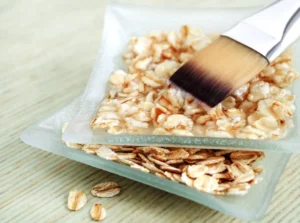
According to research published in January 2015 in the Journal of Drugs and Dermatology, oatmeal’s anti-inflammatory characteristics are naturally calming and may ease irritation caused by dermatological problems such rashes, erythema, burns, itch, and eczema. (7)
According to Zeichner, oatmeal possesses anti-inflammatory, moisturising, and skin-protective properties. Although it isn’t particularly useful in treating acne, it can help calm dry, irritated skin. For my patients who utilise potentially irritating acne treatments, I frequently advise oat-based moisturisers,” he adds.

According to Cook-Bolden, Indian brides usually use a turmeric mask before their wedding to achieve flawless complexion. According to a review published in August 2016 in Phytotherapy Research, this is probably caused by the spice’s anti-inflammatory, antimicrobial, and antioxidant properties as well as its capacity to significantly lessen the severity of skin conditions like acne, alopecia, atopic dermatitis, oral lichen planus, pruritus, and psoriasis. (8)
Spice markets and ethnic food stores carry the ingredients for this acne cure.
Make a paste by combining 1/2 cup of chickpea flour with 2 tsp of each of the following ingredients: turmeric, sandalwood, ghee (clarified butter), or almond oil. Cook-Bolden advises applying and leaving on for 5 to 10 minutes. “Pressure-rub the paste off completely with both palms and fingertips.” Rinse thoroughly in water.